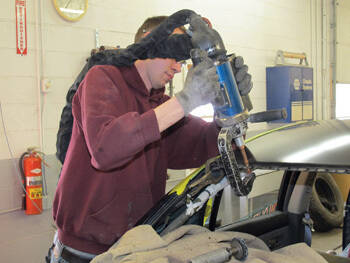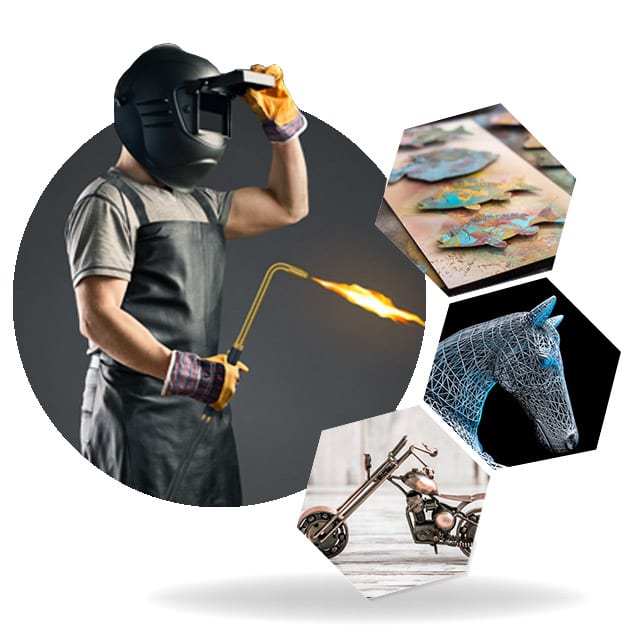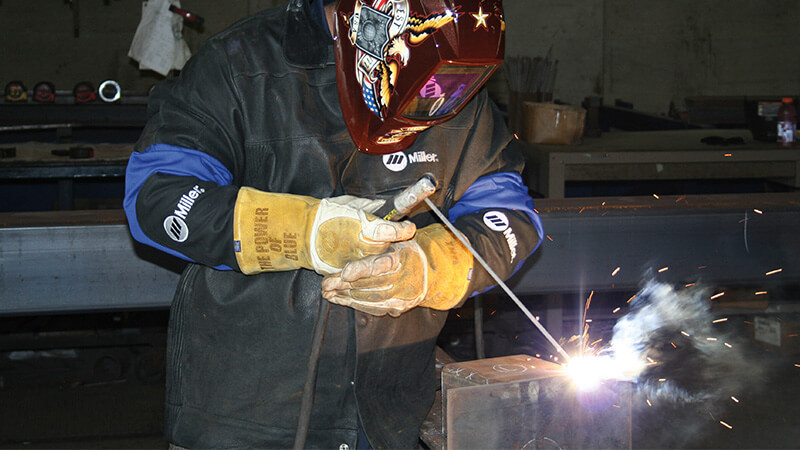Early defect indicators and what Belgrade can do about them
Wiki Article
Typical Welding Fixing Issues and Exactly How to Address Them Effectively
Welding repairs usually run into a series of concerns that can threaten the honesty of the end product. Common problems consist of poor infiltration, porosity, and misalignment, to name a few. Each defect provides distinct obstacles that require certain methods for resolution. Understanding these issues is important for welders intending to improve their skills and outcomes. This conversation will discover these typical welding repair work problems and efficient approaches to resolve them.Poor Infiltration
Poor infiltration occurs when the weld steel fails to totally fuse with the base material, causing weak joints and prospective structural failings. This issue frequently comes from not enough heat input, incorrect electrode angle, or incorrect welding speed. Welders may experience inadequate penetration because of a mistake of the needed parameters for a certain material density or type. In addition, contamination on the base material's surface can impede effective bonding, exacerbating the issue. To deal with insufficient penetration, welders must guarantee proper setups on their tools and keep a tidy work surface. Normal examination of welds is advised to recognize any shortages early, permitting prompt modifications and the prevention of compromised structural honesty in bonded assemblies.Porosity
Porosity is a typical defect in welded joints that shows up as little gas bubbles entraped within the weld steel. This issue can jeopardize the honesty of the weld, resulting in minimized strength and prospective failing under tension. Belgrade Welding. Porosity commonly occurs from contamination, wetness, or improper welding techniques, which allow gases to run away right into the liquified weld pool. To deal with porosity, welders must assure appropriate surface area preparation, preserve a clean workplace, and use suitable welding criteria. Additionally, choosing the right filler material and shielding gas can alleviate gas entrapment. Regular evaluation and testing of welds can assist determine porosity early, ensuring prompt corrective activities are taken, consequently preserving the high quality and dependability of the bonded structureImbalance
Imbalance in welding can occur from different aspects, consisting of improper configuration and thermal growth. Understanding the root creates is vital for efficient resolution. Numerous improvement techniques are readily available to realign parts and assure architectural stability.Root causes of Imbalance
Welding misalignment commonly originates from a selection of underlying concerns that can compromise structural stability. One main reason is improper fit-up of elements prior to welding, which can cause spaces and irregular surface areas. Variations in thermal expansion during the welding process can likewise result in distortion, specifically if the materials being joined have various coefficients of expansion. Additionally, insufficient fixturing and securing may stop working to hold elements safely in position, resulting in motion throughout welding. Badly kept devices, including welding devices and tools, may introduce inconsistencies in the weld bead, further adding to imbalance. Operator mistake, stemming from insufficient training or experience, can additionally play a substantial duty in producing misaligned welds.
Modification Methods Readily Available
Attending to misalignment successfully calls for a combination of corrective techniques customized to the details issues available. One typical method is the use of jigs or fixtures to hold components in the proper setting during welding, making certain constant placement. In addition, pre-heating the materials can aid minimize distortion and boost fit-up. For considerable imbalance, mechanical adjustment strategies, such as utilizing hydraulic jacks or clamps, can be utilized to fix the placement prior to welding. Post-weld warm therapy may likewise be essential to soothe anxieties caused by imbalance. Careful examination and modification throughout the setup stage can prevent imbalance issues from becoming considerable troubles, advertising a smoother welding procedure and improving overall structural stability.Distortion
Distortion is a common challenge in welding that can arise from numerous elements, including irregular heating and air conditioning. Understanding the sources of distortion is vital for executing effective prevention strategies. Resolving this concern not just improves structural honesty however also enhances the general quality of the weld.Sources of Distortion
When subjected to the intense heat of welding, materials frequently undertake adjustments that can result in distortion. This phenomenon primarily develops from thermal expansion and tightening during the welding procedure. As the weld area warms up, the product expands; upon air conditioning, it acquires, which can produce inner stress and anxieties. On top of that, uneven heating throughout a workpiece can exacerbate these stress and anxieties, leading to warping or flexing. The kind of product also plays a substantial duty; steels with differing thermal conductivity and coefficients of development might react in different ways, leading to unpredictable distortions. Poor joint design and insufficient fixturing can contribute to misalignment during welding, increasing the likelihood of distortion. Recognizing these causes is essential for efficient welding repair work and prevention strategies.Prevention Techniques
Efficient prevention techniques for distortion throughout welding concentrate on managing warm input and ensuring proper joint style. Keeping a constant heat input helps to lessen thermal development and contraction, which can bring about distortion. Making use of techniques such as preheating the workpiece can additionally reduce the temperature slope, promoting uniform heating. Additionally, picking ideal joint layouts, such as T-joints or lap joints, can enhance security and lower stress focus. Executing appropriate fixturing to protect the work surfaces in place further aids in preserving placement throughout the welding procedure. Ultimately, staggered welding sequences can disperse heat extra uniformly, stopping local distortion. By applying these strategies, welders can greatly decrease the possibility of distortion and boost the general quality of their welds.Cracking
Breaking is an usual problem come across in welding fixings, typically resulting from various elements such as inappropriate air conditioning prices, product choice, or poor joint prep work. The event of cracks can greatly endanger the honesty of the weld, bring about possible failures throughout procedure. To resolve this concern, welders must initially examine the root creates, making certain that products work and suitably chosen for the specific application. Furthermore, controlling the cooling rate throughout the welding process is crucial; fast air conditioning can cause anxiety and lead to fracturing. Proper joint layout and preparation also add to lessening the risk. Applying these methods can boost weld high quality and toughness, eventually minimizing the possibility of fracturing in ended up weldments.
Insufficient Blend
A significant issue in welding repairs is incomplete fusion, which happens when the weld steel does not adequately bond with the base product or previous weld passes - Welding. This problem can lead to weaknesses in the joint, possibly endangering the stability of the welded structure. Factors contributing to incomplete fusion include inadequate warmth input, incorrect welding method, and contamination of the surface areas being signed up with. To address this problem effectively, welders need to assure appropriate pre-weld cleansing and surface area preparation, as well as change their welding parameters to attain adequate penetration and blend. Regular evaluation throughout the welding process can likewise assist determine incomplete combination early, permitting timely restorative steps to boost the overall quality of the weldOverheating
While welding repairs can boost architectural honesty, overheating provides a significant challenge that can bring about product degradation. Extreme heat during welding can alter the mechanical residential properties of metals, leading to lowered stamina, increased brittleness, and warping. This sensation is specifically important in high-stress applications where structural dependability is extremely important. Determining getting too hot can include aesthetic examinations for discoloration or distortion, along with keeping track of temperature throughout the welding process. To reduce the threats connected with getting too hot, welders need to utilize appropriate techniques, such as managing warm input, adjusting travel speed, and utilizing appropriate filler products. Additionally, implementing pre- and post-weld warmth treatments can assist bring back material homes and improve the general top quality of the repair, guaranteeing lasting performance and security.Regularly Asked Inquiries
What Are the Typical Indicators of a Welding Issue?

Just How Can I Evaluate My Welds for Top quality?
To examine welds for quality, one can make use of aesthetic examinations, ultrasonic testing, read more and radiographic methods. Each technique guarantees structural honesty, recognizes problems, and confirms adherence to defined standards, eventually enhancing the reliability of the welded joints.What Safety and security Precautions Should I Take While Welding?
When welding, one must prioritize safety and security by wearing proper personal protective tools, making certain correct air flow, protecting flammable materials away, preserving a tidy work area, and being conscious of environments to avoid injuries and mishaps.Can I Repair a Weld Without Renovating the Entire Joint?
Fixing a weld without renovating the whole joint is feasible, relying on the damages (Belgrade Fabrication). Strategies such as grinding, adding filler product, or making use of a welding procedure can properly attend to certain imperfections while preserving the surrounding structureWhat Devices Are Important for Effective Welding Repairs?
Crucial devices for reliable welding fixings consist of a welding equipment, cord brush, grinder, protective gear, clamps, and filler materials. Each device plays a crucial duty in making sure top quality and security throughout the fixing procedure. Porosity usually occurs from contamination, moisture, or inappropriate welding techniques, which permit gases to leave into the liquified weld swimming pool. Poorly conserved devices, including welding devices and tools, may present variances in the weld bead, further adding to misalignment. When subjected to the intense warmth of welding, products commonly undertake modifications that can lead to distortion. Breaking is a common concern come across in welding repairs, usually resulting from numerous factors such as improper cooling prices, product selection, or insufficient joint preparation. A substantial problem in welding repair work is insufficient combination, which takes place when the weld steel does not effectively bond with the base product or previous weld passes.Report this wiki page